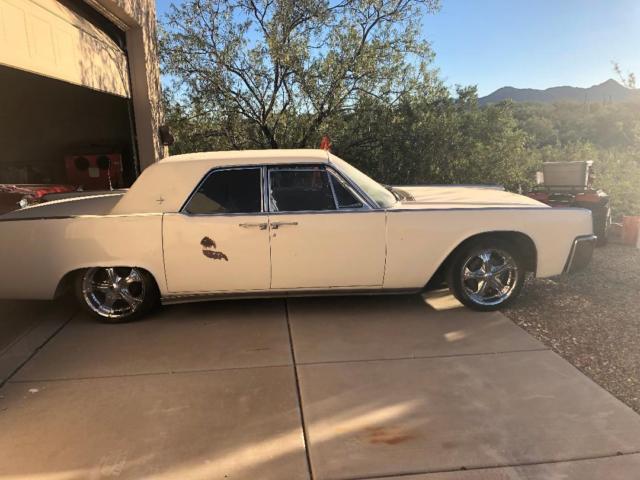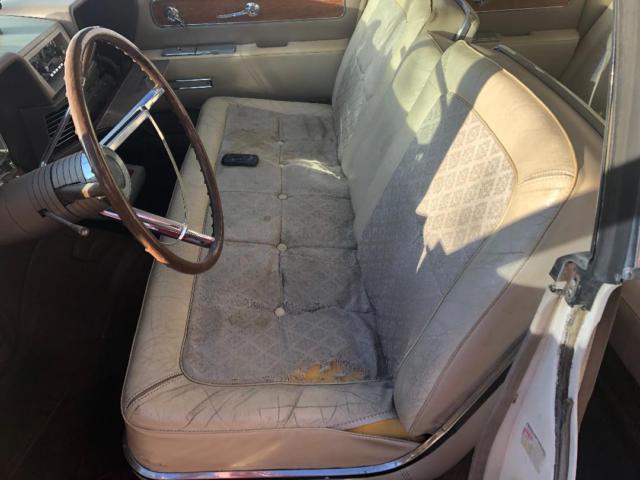1962 LINCOLN CONTINENTAL ORIGINAL CALIFORNIA CAR WITH FOOSE WHEELS SUICIDE DOORS
Technical specifications of Lincoln Continental 1962
| Price: | - |
|---|---|
| Item location: | Tucson, Arizona, United States |
| Make: | Lincoln |
| Model: | Continental |
| Type: | Sedan |
| Year: | 1962 |
| Mileage: | 98000 |
| VIN: | 5209043302 |
| Color: | White |
| Number of cylinders: | 8 |
| Drive type: | RWD |
| Vehicle Title: | Clear |
| You are interested? | Contact the seller! |
Description
1962 LINCOLN CONTINENTALORIGINAL CALIFORNIA CAROWN A PIECE OF HISTORY!!When critics carp that the Lincoln brand needs to “recapture its lost glory,” the suicide-door Continental is what they have in mind. Modern yet elegant, its simple, unsculpted “blade-side” sheetmetal and overall symmetry instantly made its competitors, still clinging to fins and other styling excesses of the 1950s, look stale and irrelevant. The Continental was also the antithesis of its immediate predecessor, the frightful-looking 1958-60 Continentals (Marks III, IV, and V). The new Lincoln was perfectly in tune with Kennedy-era optimism and renewal; the beginnings of the sexual revolution; and the pillbox hats, slimmed-down suits, and other cultural signposts of the early 1960s now celebrated by the TV show Mad Men.
The Continental originally was penned as a two-door Thunderbird concept, but when future Ford president Robert S. McNamara saw it in a design studio, he decided that it would better serve as a car to resurrect Lincoln, which was then, as now, a struggling brand. A design team supervised by Elwood Engel, who later served as Chrysler’s design chief, churned out the four-door Continental in only two weeks, and it soon went into production as both a sedan and a convertible. Reviewers grasped for superlatives. Tom McCahill of Mechanix Illustrated wrote that the 1961 Continental was “one of the plushest wolftraps on the road. It’s as quiet as the love life of a bass, and it rides as smooth as spilt fudge on a canted stove. [Its] looks will equal any car’s in the nation and, in the opinion of some of my arty friends, will trim all others six ways from the post and twice on Sunday.” Indeed. The editors of Car Life, less prone to hyperbole, declared simply and accurately that the Continental was “the best-looking American car built today.”
The Continental was also one of the best-built American cars of its time, the recipient of a rigorous quality-assurance program that began with the 1956 Mark II coupe. The Continental, like the Mark III sedan, had unibody construction but was said to be 67 percent stiffer, thanks partly to the rear-hinged back doors, which allowed for stronger B-pillars. Each of its 300-hp, 430-cubic-inch V-8 engines was dyno-tested for three hours, disassembled for visual inspection, and rebuilt, and the three-speed automatic transmission was tested for thirty minutes before installation. Completed vehicles were subjected to a twelve-mile road test, and no break-in period or 1000-mile service was required; cars were not expected back in the dealership service bay until the first oil change at 6000 miles. To reinforce the company’s level of confidence in the new Continental’s mechanical fortitude, Lincoln added a two-year/24,000-mile warranty, which was virtually unheard of in the early 1960s.
PLEASE E-MAIL CALL OR TEXT 520-904-3302 WITH ANY QUESTIONS.
OFFERED WITH NO RESERVE AND A STARTING BID OF ONLY $1.00HIGHST BIDDER OWNS A TRUE CLASSIC CAR!!
Used vehicles sold as is no warranty expressed or implied mechanically and/or cosmetically. Described to best ability not responsible for any errors and/or omissions.
PLEASE NOTE: Car is for sale locally. We reserve the right to sell at any time without liability and/or recourse.












